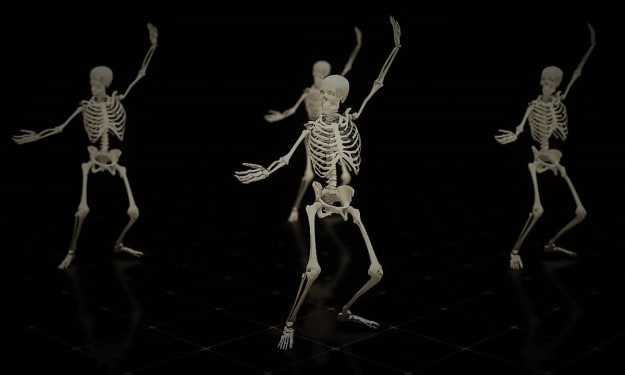A Modern Dilemma
How Did We Let It Go This Far?

Thirty minutes after our last fight, Lannie and I were driving south on California Interstate Highway 163 through Balboa Park. This is a beautiful stretch of two-lane highway that usually gives me a great deal of pleasure. For about four miles you travel through a lush subtropical jungle of ferns, eucalyptus trees, and grassy hillsides; it’s as if you have been transported to the Pacific Northwest; refreshing, to say the least. Not too far north, 163 is a typical six-lane freeway that clogs up like a fat man’s arteries during daily rush hours, but this four-mile stretch through Balboa Park, as you pass the zoo, is as beautiful as any highway on Lanai or Kauai. Local legend has it that JFK once deemed this section of Interstate 163: “the most beautiful highway in America.”
Today I saw none of it. I was disheartened and preoccupied with this morning’s shouting match with Lannie. Our fights had become a daily occurrence and we were clearly headed toward a breaking point. I knew it was going to be bad, whatever happened. She said I was cold and not emotionally forthcoming. I thought it was a ridiculous criticism. It was as if she was calling a lion a carnivore. I’m a man. Men don’t wear their emotions on their sleeves. We generally deal with life analytically: identify the problem, determine how to resolve it, and create a strategy for moving forward. Done.
Lannie said I was becoming increasingly “detached,” and “emotionally vacant.” Conversely, where in the early, magical days of our partnership I had admired her as intelligent, competent, and not unreasonably emotional, she had become someone I didn’t get. I felt like the competent Lannie had been replaced by the emotional Lannie. I knew I hadn’t changed; she had changed.
I was now driving Lannie to her monthly Women’s Empowerment Seminar. She said she loved it. As the name implied, she found it “empowering.” She was certainly learning new ways to find fault with everything I did. I couldn’t help but see the changes in Lannie as coinciding with her attendance at the Empowerment Seminar. As a result, I was resentful and blamed the seminar for the recent rancor in our relationship and our increasingly angry fights.
I was vaguely aware of a red Ford pickup in the lane directly in front of us. I was driving on auto-pilot about three car lengths behind it. Mentally disengaged, I was thinking about Lannie. I knew one thing for certain, Lannie and I were near the end of our run. It had been good. We’d been together for almost two years, a fairly long-term relationship by my standards. Things between us had been fucking idyllic for maybe 18 months, but then we’d started irritating each other. The cute idiosyncrasies we “discovered” about each other when we first met had become triggers for anger and irritation we directed at the other.
With my mind far away, I was barely watching the road when suddenly the red truck in front of me jerked into the right lane then immediately back into the left lane. Before I had time to wake up and consider why the driver of the truck would make such a drastic maneuver, I saw it: there was a body lying in the road directly in front of me and I was heading straight toward it. The truck driver had swerved to miss it. The only thing I could do to avoid running over it was to make the same maneuver as the truck had. I yanked the steering wheel to the right, missing the body by inches, then jerked the wheel to the left, returning to my lane. This happened so fast I didn’t even have time to take my foot off the gas pedal. As I passed the body at 70 miles an hour, it registered somewhere in my subconscious that it was the body of a man. All of his limbs were bent at sickeningly unnatural angles and his shoes were lying a few feet away. In the split second it took me to dodge the body I somehow knew the man was dead. Or, as I considered it, he had to be dead.
Lannie kind of yelped as I jerked the wheel right, then left, but she said nothing as we continued balling down the highway at 70 miles per hour. I knew I was in shock. I supposed Lannie was too. My pulse was pounding in my ears and my hands and legs were shaking. My right foot was bouncing on the gas pedal. My face felt flushed and my ears were pulsing hot. My hands on the wheel were suddenly slick with sweat. Neither of us said anything.
What should I do? I considered stopping. I did not. I kept driving. Should I pull over? At 70 miles an hour, I was rapidly putting distance between us and the body behind us. The red truck in front of me kept driving and I continued to follow along behind it at a safe three-car-length distance as if nothing had happened. Was I supposed to stop? Should I? Within seconds we were half a mile past the body. I didn’t know what to do, but I knew that I desperately wanted to keep driving. I wanted to forget about the body; limbs askew, shoes off. Dead man.
I looked in my mirrors and twisted around to see if there were other cars nearby, but there were none. If there had been I probably would have hit it when I jerked our car into the right lane to avoid hitting the body. The only vehicle in sight, though — the only other vehicle in the world at that moment, it seemed— was the red pickup. And neither its driver nor I were stopping or even slowing down.
I looked at Lannie. I could see from the startled look on her face that she had seen the body in the road. With eyes wide, she turned to look at me.
“Shouldn’t we stop?” she asked. Her voice was flat and shaky. It was as much a statement as a question. “We have to stop.”
After a couple of seconds, I said, “I don’t know. I don’t think there is anything we can do. I’m pretty sure he is dead.”
Even as I said it, it sounded lame. Under what circumstances do you just drive by a dead body lying in the road? It wasn’t just a box that fell off a truck. It’s wasn’t an old mattress or an unsecured bag of yard clippings. This was a human being. Dead or not, didn’t basic humanity require that we stop and check on the man’s condition? At least confirm that he was dead and not just injured and needing an ambulance? What is the protocol in this situation? This isn’t something they teach you in driving school. Meanwhile, I kept driving down the highway at over a mile a minute.
Lannie was squinting at me, clearly upset about pretending we never saw the body. I understood, but leaving it, forgetting we had ever seen it, seemed like the easiest thing to do, the most reasonable thing to do: no hassles, no time-consuming police statements, no involvement. The best thing to do by far, under the circumstances. But could we live with that? I wasn’t sure. Lannie was having trouble with it. She told me to stop, turn back, do anything but continue driving as if nothing had happened. When she saw I was going to do nothing but keep driving, she yelled at me to stop, then grabbed the steering wheel and screamed at me. I pushed her hands away and held the wheel steady.
“Look,” I said finally, “even if we wanted to turn back, it would take us ten minutes to get off the highway, go back north and then get back on going south. By then,” I said, “the police will be there and they’ll be taking care of the guy.” Lannie was crying with her hands over her face.
We didn’t stop. We didn’t go back. Lannie kept crying softly. Ahead of us, the red truck kept driving down the highway, establishing the code of conduct for drivers who come across bodies lying on the highway. If they appear dead, or you don’t think there is anything you could do to help, you just keep driving. I was content to follow the truck. At the same time I knew that if the red truck had not been there, or if it had stopped, I too would have stopped. But the driver of the truck and I were now co-ignorers. The driver of the red truck and I — and Lannie, reluctantly, simply because she was in the passenger seat — had become bonded in this bizarre tragedy. We were the sole survivors of a terrible event, an event we might live with forever.
When we arrived at the Civic Center Convention Hall where Lannie’s seminar was held, she didn’t get out right away. As I always did, I told her I would be loitering around the area and would expect her to call me in an hour or so when the seminar was over. She just sat there. She had stopped crying, but she was just staring out the window. I could tell she was really upset.
After a minute I asked, “Honey, do you just want me to drive you home?”
I put my hand on her arm, but she quickly jerked it away and opened the car door. Without a word she got out and walked away. I watched her and, with a sense of irritation, I saw that her purse was unzipped, as usual, and I considered rolling down the window to call after her but did not. It didn’t seem like the right time for that.
That was the last time I saw Lannie. My last memory of her is seeing her walk away from me. I guess that’s appropriate, given where we were headed.
I read later that the body we saw was of a man who had jumped off the Laurel Street Bridge, known (gruesomely) as “Suicide Bridge.” Every year the local paper publishes an updated tally of the number of people who have jumped to their deaths since the bridge was built in 1915. The man we saw on the last day of our relationship was number 82.
©2021 Richard L. Boyer
About the Creator
Richard L. Boyer
A devoted student of life and its fabulous twists and turns. Trying hard to enjoy each minute of the journey. Expressing my thoughts, ideas, observations, and emotions through poetry, fiction, and the occasional essay. Feedback welcome!






Comments
There are no comments for this story
Be the first to respond and start the conversation.